Your dog isn’t just being weird—they’re terrified of the toaster.
Or the ceiling fan. Or that garden gnome you thought was cute.
Dogs can be brave, loyal, and fierce when it comes to protecting you…
but some of the most random, everyday things can send them into a full-blown panic spiral.
We’re talking about stuff you’d never expect—like aluminum foil, your phone’s ringtone, or even a balloon just existing in the same room.
You’re not alone if your pup jumps like it saw a ghost every time you sneeze.
It’s more common than you think—and some of the reasons are downright hilarious.
Get ready to nod, laugh, and maybe rethink your home decor.
Here are 19 shockingly common things that spook our furry friends—and what you can do to calm those adorable nerves.
Thunderstorms
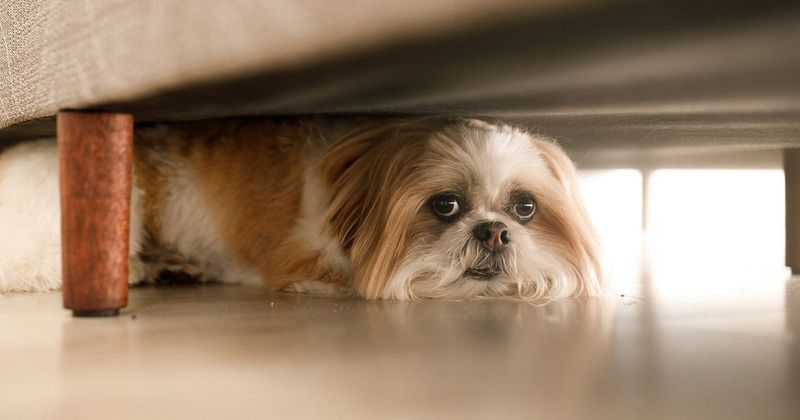
Thunderstorms can be terrifying for dogs, with their loud thunder and bright lightning. The sound can be overwhelming, and the atmospheric changes might make them feel uneasy. Some dogs might shake, hide, or even try to escape.
Creating a safe space with familiar toys and blankets can be comforting. Playing calming music or using a white noise machine might also help drown out the storm sounds.
Did you know? Some dogs can sense a storm approaching even before it hits, thanks to their acute sense of hearing and pressure sensitivity.
Fireworks

Fireworks are a common cause of fear in dogs, with their sudden bursts of light and loud noises. Dogs hear frequencies humans can’t, making fireworks even more intense for them.
Keeping them indoors, away from windows, and providing a cozy spot can help. Some dog owners use calming wraps or anti-anxiety medications.
Fun Fact: Fireworks have been used in celebrations for over 2,000 years, but for dogs, this ancient tradition can be a yearly ordeal of fright and stress. Understanding their fear can lead to better preparation.
Strangers
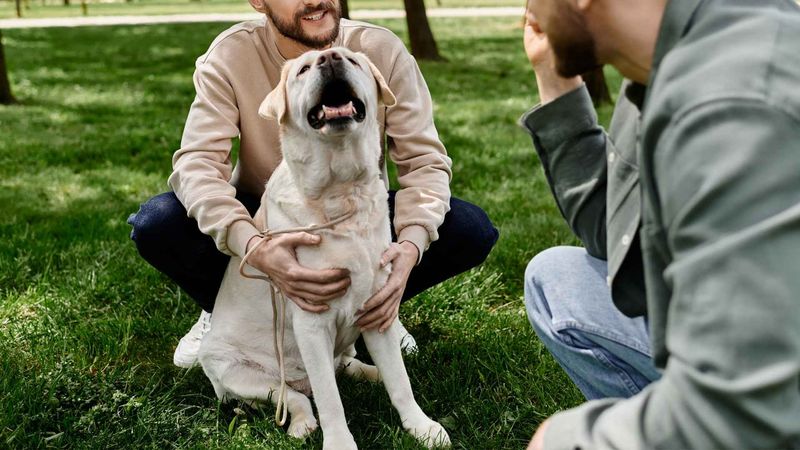
Strangers can be intimidating for dogs, especially if they’re not socialized early. A stranger’s unfamiliar scent and behavior can be unsettling.
Gradual introductions with positive reinforcement can help a dog become more comfortable. Watching how a dog reacts and respecting their boundaries is key.
Did you know? Dogs have a keen sense of smell and can detect emotions through scent. This ability might be why some seem wary of certain strangers while being friendly to others. Trust their instincts and ease them into new social situations.
Vacuum Cleaners

Vacuum cleaners are often a dog’s nemesis, with their loud noise and sudden movements. To a dog, a vacuum can seem like a loud and unpredictable creature.
Introducing the vacuum slowly, while it’s off, might help, along with treats to create positive associations. Some dogs might prefer staying in another room during vacuuming.
Quirky Fact: Despite their fear, some dogs might bravely bark or even attack the vacuum, trying to protect their territory from the ‘strange intruder.’
Car Rides
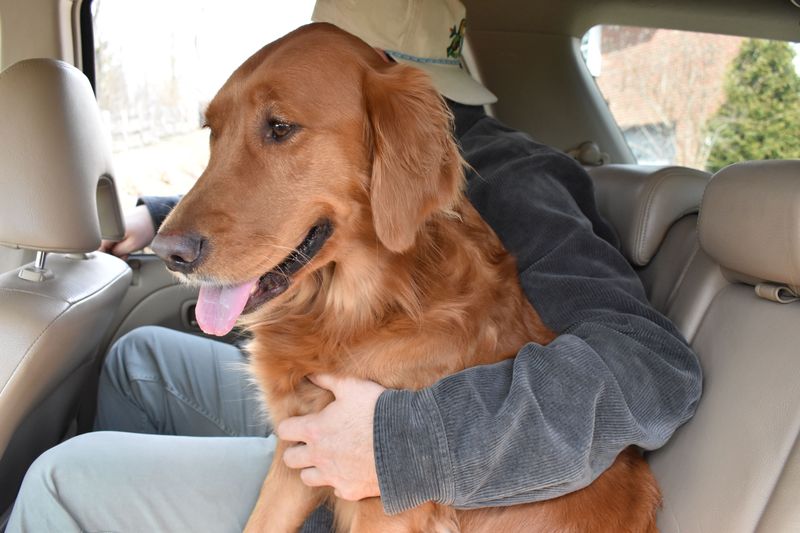
Car rides can make some dogs anxious, especially if they associate them with vet visits. The motion can cause discomfort or even motion sickness.
Start with short, positive trips to fun places like the park to change their perception. A favorite toy or blanket might make the ride more comforting.
Unique Insight: While some dogs love sticking their heads out of car windows, others might find the wind and sounds disorienting. Understanding your dog’s preference can make car rides more enjoyable for both of you.
Loud Music

Loud music can be unsettling for dogs, whose sensitive ears pick up more frequencies than human ears. The volume and vibrations can be overwhelming.
Keeping the volume moderate and observing your dog’s reactions can help. Providing a quiet space for them to retreat to is also a good idea.
Musical Insight: Just like humans, dogs have their music preferences. Some studies suggest classical music can be calming for them, while heavy metal might increase anxiety. Experiment to find what tunes soothe your furry friend.
Balloons
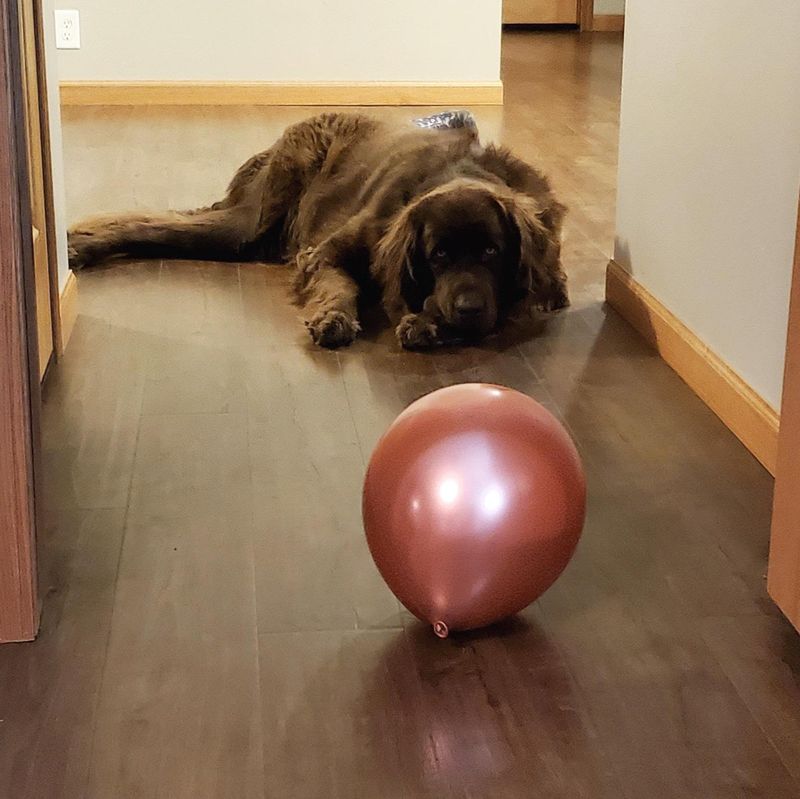
Balloons, with their unpredictable movements and potential to pop, can be frightening for dogs. The sudden noise of a balloon popping might startle them.
Allowing controlled interactions with balloons and showing there’s nothing to fear can help. Avoid letting them play unsupervised with balloons.
Fun Fact: Balloons have been a part of celebrations for decades, but their latex scent and texture might be what leaves some dogs wary. Understanding their quirks can help avoid surprise scares.
Vet Visits
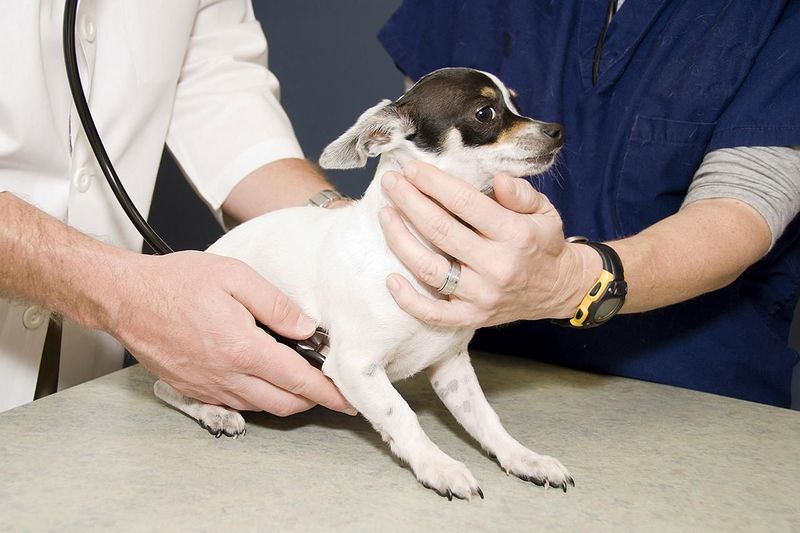
Vet visits are a common source of anxiety for dogs. The unfamiliar smells, sounds, and experiences can be overwhelming.
Bringing familiar items from home, like a blanket or toy, can make the visit less stressful. Rewarding them with treats after a visit can help create positive associations.
Did you know? Many vets are now offering fear-free visits, focusing on making the experience as stress-free as possible. Choosing such a vet can make a big difference for anxious dogs.
Loud Cars

Loud cars, especially motorcycles and trucks, can be frightening for dogs. The sudden roar and vibrations might be perceived as a threat.
Training dogs to stay calm and rewarding calm behavior can help. Some dogs might benefit from desensitization training to get used to traffic noises.
Interesting Insight: Dogs have a heightened sense of hearing, making them more susceptible to loud noises. While some might bark at cars, others prefer to retreat to a quieter space. Respecting their comfort can ease their fears.
Skateboards
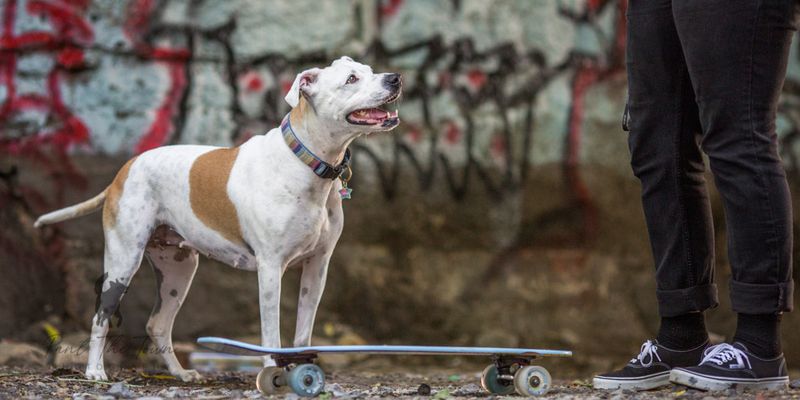
Skateboards can alarm dogs, with their speed and noise. The unpredictable movement of a skateboard might make some dogs uneasy or trigger a chase instinct.
Acclimating dogs to skateboards from a distance and rewarding calm behavior can help them adjust. Understanding their prey drive can aid in managing reactions.
Fun Fact: Skateboards have been popular since the 1960s, but for many dogs, it’s the wheels and movement that matter. Knowing this can help in training them to ignore or accept such fascinating ‘rolling objects.’
Children
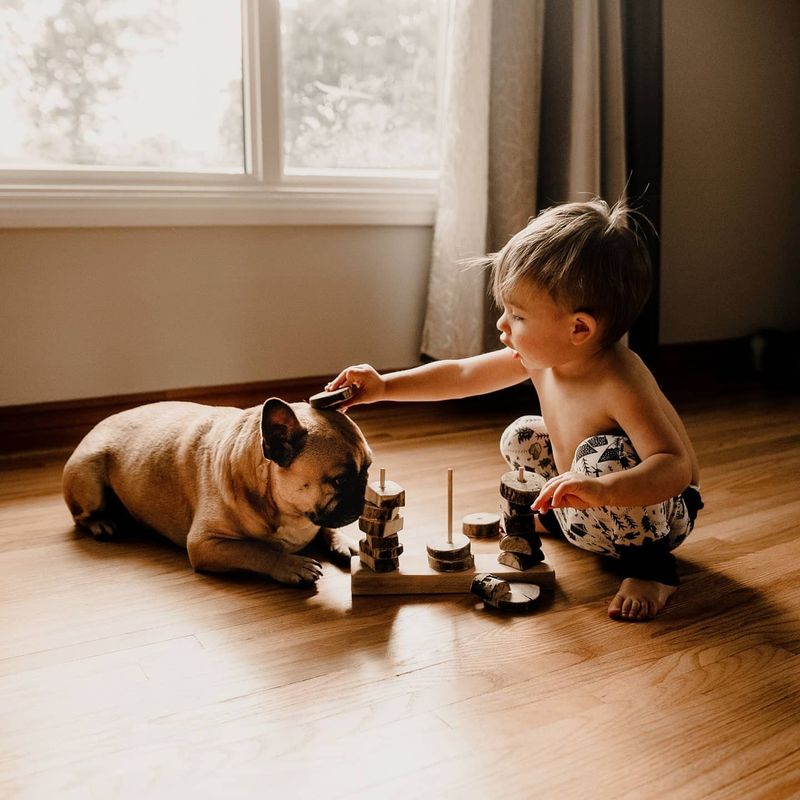
Children, with their unpredictable behavior and high-pitched voices, can be intimidating for dogs. Some might find the energy overwhelming.
Supervised interactions and teaching children how to approach dogs calmly can foster positive relationships. Respecting a dog’s space and boundaries is crucial.
Did you know? Dogs often mirror the energy around them. Calm interactions and positive reinforcement can help make children and dogs best friends. Knowing both sides’ comfort levels can lead to harmonious playtimes.
Alarms
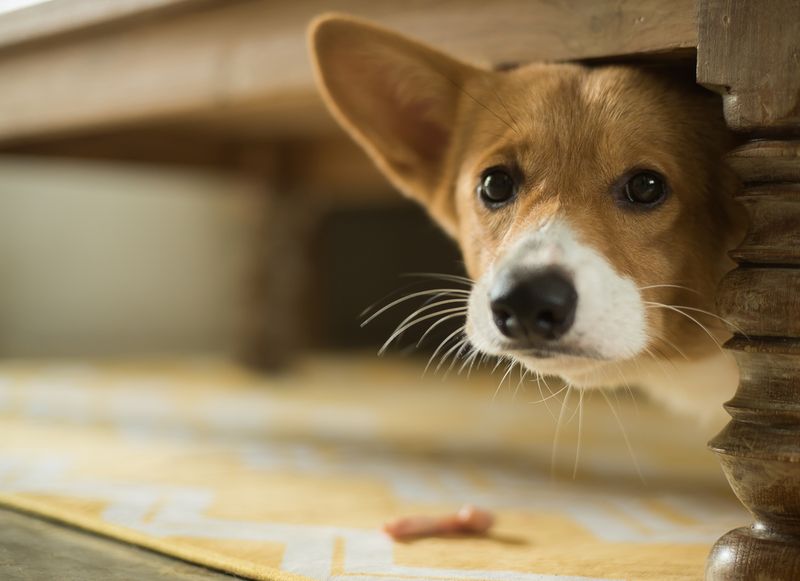
Alarms, with their shrill sounds, can be distressing for dogs. Fire alarms, in particular, might cause panic due to their urgency and volume.
Training them with practice alarms and creating a safe space can help mitigate fear. Knowing evacuation safety for pets is essential.
Safety Note: Regularly checking alarms and having a pet evacuation plan can save lives. Understanding a dog’s reaction to alarms can lead to better preparedness for emergencies.
Costumes

Costumes can baffle dogs, altering familiar human shapes into unrecognizable forms. The change can be perplexing or even alarming.
Introducing costumes gradually and allowing dogs to sniff them while they’re off can ease confusion. Positive reinforcement is vital.
Halloween Insight: While costumes are fun for humans, they can bewilder dogs. Ensuring your dog is comfortable with your attire during celebrations enhances their safety and enjoyment, preventing unwanted scares and stress.
Umbrellas
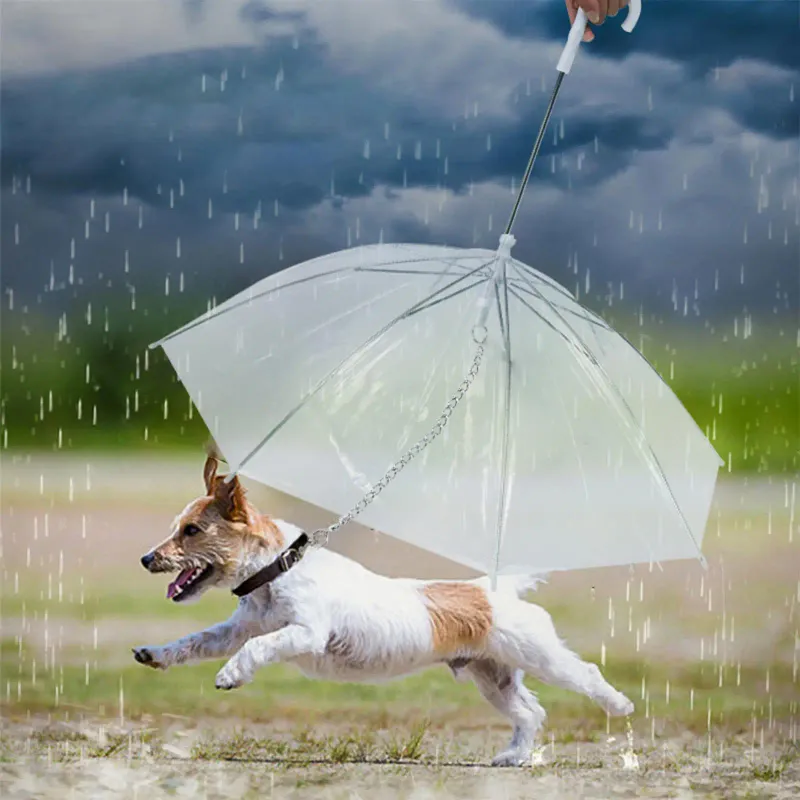
Umbrellas opening quickly can startle dogs, with both the motion and the sound catching them off guard. The sudden appearance of a large object might seem threatening.
Practicing with umbrellas in a controlled setting and rewarding calm behavior can help. Understanding their body language during such situations is insightful.
Did you know? Dogs use visual cues heavily, and sudden changes in size or shape in their environment can cause stress. Gradual exposure to everyday items like umbrellas can make their world less intimidating.
New Furniture
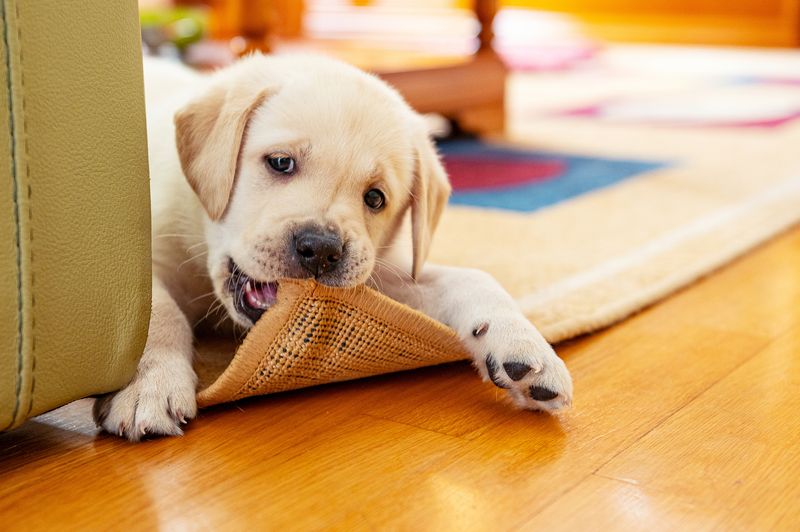
New furniture can unsettle dogs, altering their familiar environment. The unfamiliar scent and presence can make them cautious or anxious.
Introducing one piece at a time and allowing dogs to explore at their own pace can help. Familiar items like blankets can make transitions smoother.
Home Insight: Dogs are creatures of habit, and changes in their living space can cause uncertainty. Gradual adjustments and reassurance can help them accept new additions with ease and comfort.
Other Animals

Other animals can evoke various reactions in dogs, from curiosity to fear. Cats, in particular, can be unpredictable with their swift movements and aloof demeanor.
Supervised introductions and patience can foster positive interactions. Understanding individual personalities aids in managing relationships.
Animal Insight: Dogs are social creatures, but not all interactions are instant friendships. Knowing how your dog reacts to different animals ensures safe and enjoyable encounters, promoting harmony in multi-pet households.
Mirrors

Mirrors can perplex dogs, as they see another dog mimicking their actions. This reflection might confuse or even frighten them.
Allowing dogs to explore mirrors at their pace and showing there’s nothing to fear can aid in acceptance. Some might even enjoy watching themselves eventually.
Surprising Fact: While humans recognize themselves in mirrors, dogs might view the reflection as a potential playmate or rival. Understanding this perspective can help in easing their apprehension.
New Smells

New smells can intrigue or overwhelm dogs, with their keen sense of smell capturing scents we might not notice. This can be exciting or unsettling.
Introducing new scents gradually and allowing exploration can help them adjust. Observing their reactions provides insights into their preferences.
Scent Insight: Dogs have a powerful olfactory system, with some breeds having up to 300 million scent receptors. Embracing their sensory world can enhance bonding and understanding, turning new smells from a source of fear to fascination.
Bicycles

Bicycles, with their speed and unfamiliar motion, can alarm dogs. The quick approach and departure might trigger a chase instinct or fear response.
Training dogs to sit while bicycles pass and rewarding calmness can help. Recognizing their triggers allows for better management during walks.
Cycling Note: Bicycles are a common part of daily life, but for dogs, understanding their movement is key. Exposure and positive experiences can turn potential fear into indifference or even curiosity over time.

